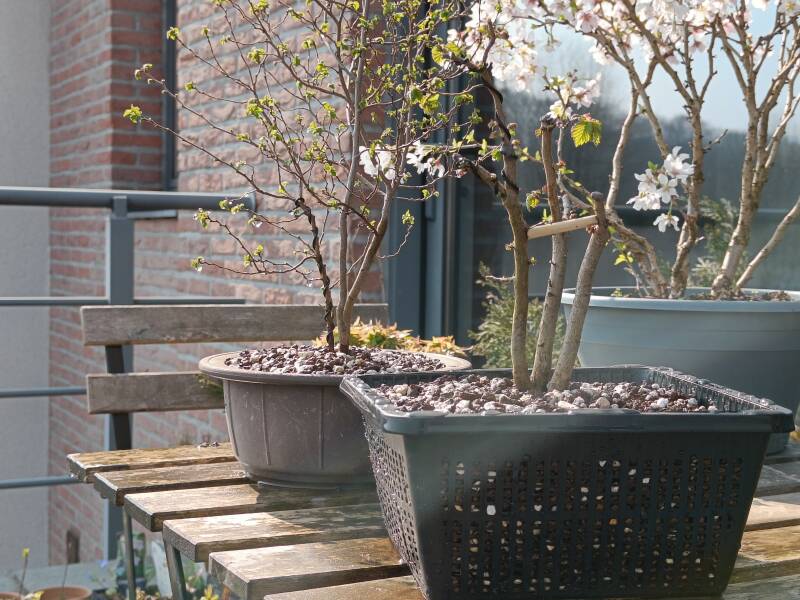I've grown this field elm (Ulmus minor) for 3 years from cuttings. The trunks were bound together with aluminum wire in the first year after they rooted (below) and now they've already fused together quite nicely.
This style of bonsai is called 'sankan' in Japanese. The composition is made of three trunks that are connected right above or at the surface roots ('nebari' in Japanese).
In the pictures below, you can see another example of using rooted cuttings to create multi-trunk bonsai. In this example I took 5 thin cuttings and wired them together. The wire was covered with electrical tape to avoid damage to the bark. You can also use aquarium tubing.
When doing this, try to avoid crossing trunklines and roots. Every trunk and root should emerge from the center and move outward.



I'm trying to create a radial rootspread. When I repotted this tree, I pruned thick roots in order to create a more ramified nebari. Crossing roots and roots that were growing up or down were also removed.
You can also see that I'm using a piece of a chopstick to seperate two trunks. The trunk in the back wasn't clearly visible from the chosen front, because the trunk on the right was right in front of it. In a couple of weeks, the chopstick will be removed and the trunks will stay in their new position.

The cuttings were planted in a mix of perlite, regular potting soil and akadama. It's a decent mix for cuttings, but I wouldn't use it with more mature trees. The mix encouraged the growth of fine feeder roots.


There were some roots that were a bit too thick for the image of the tree. I'm trying to develop a flat, spreading root base on this tree. By removing the thick roots, I try to encourage those thick roots to ramify or bifurcate more.
The larger root was removed using a sharp concave cutter. I then covered the wound with liquid cut paste and when I added the new soil, I put some spaghnum moss on the wound. This will keep the wound moist and encourage new root growth.
The bottom of the root ball was cut flat and any root that was sticking out downward was removed. I made sure not to remove too much of the root mass, since I'd like to thicken the trunks some more.
Elms have a tendency to develop fat roots. So they should always be kept in check, to avoid problems in the future.
By cutting the roots flat at the bottom, I'm making sure I can fit the tree in a nice shallow pot when it's more developed.


I used a mix of akadama, lava and pumice, in a ratio of aprox. 2:1:1. I've recently noticed that using too much akadama, encourages very fine rooting, which in turn promotes the growth of very fine branches. For this tree, I don't want fine branches just yet. I want to see more coarse growth, which helps create more girth. Using a pond basket or colander should also promote vigour.



Add comment
Comments